Prices of rhinoceros beetles and stag beetles in 1980 and 1997 (and bell crickets in 1928)
I found market prices of rhinoceros beetles and stag beetles in the past.
1. Introduction
2. Prices in 2016
3. Prices in 1997
4. Prices in 1980
5. (Appendix) Price of bell crickets in 1928
Introduction
In this post I will write about specific insect species living in Japan. All the species are quite popular in Japan but I suppose they are not in abroad. I will give you brief introduction of these species.
Dorcus hopei binodulosus (オオクワガタ)
Rare species in wild. However we can buy them at reasonable prices since amateurs established breeding methods. There was a price bubble of this species in the past.
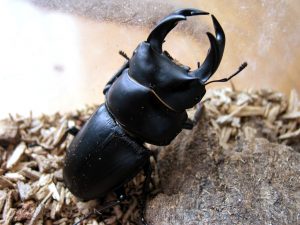
Common species in wild. Smallest in size among the species in this section.
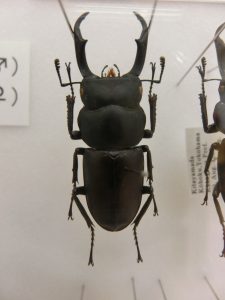
Prosopocoilus inclinatus (ノコギリクワガタ)
Common species in wild.
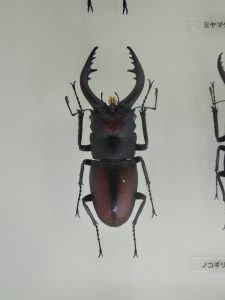
Lucanus maculifemoratus maculifemoratus (ミヤマクワガタ)
Rare in mid-southern areas in Japan. Can be seen in mountain or nothern area of Japan.
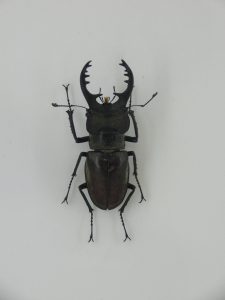
Common species in wild. Rhinoceros beetle may be more popular than stag beetles for children.
 Prices in 2016
Prices in 2016Dorcus rectus rectus: 300 yen/male (in a shop near my house)
Prosopocoilus inclinatus: 400 yen/male (in a shop near my house)
Rhinoceros beetle: Probably similar to Prosopocoilus inclinatus.
Dorcus hopei binodulosus: Vary according to its size and birthplace (the species from specific areas have brand value). However if you do not care about size and birthplace, you can buy 1 pair (male and female) for 3000-4000 yen. (Dorcus hopei binodulosus in a online shop Rakuten is here)
Prices in 1997
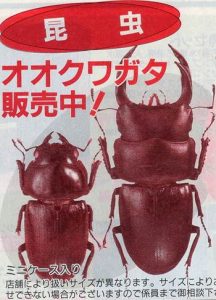
I found prices of those insects in a leaflet of a DIY store in 1997.
Rhinoceros beetle: 480 yen/male, 180 yen/female
Prosopocoilus inclinatus: 580 yen/male, 280 yen/female
Dorcus hopei binodulosus: 6400 yen/male less than 45 mm in size, 25000 yen/male 60mm in size, 80000 yen/male 69mm in size, 6800 yen/female less than 34 mm in size, 14400 yen/female 40mm in size, 150000/ female 48mm in size
I feel the prices of rhinoceros beetles and Prosopocoilus inclinatus are similar to the current prices, but that of Dorcus hopei binodulosus is too much high.
As I wrote earlier, there was a price bubble of Dorcus hopei binodulosus in and before 1999. The prices in 1997 would have been affected by the trend.
By the way, prices in general has been almost no change between 1997 to 2015 according to this web site.
Prices in 1980
I found the prices of the insects in a book (Ref.1) published in 1980. These are the average prices in department stores at Tokyo area.
Rhinoceros beetle: 150 yen/male, 100 yen/female
Lucanus maculifemoratus maculifemoratus: 800 yen/(probably male)
Prosopocoilus inclinatus: 250 yen/(probably male)
This book also mentioned that Dorcus hopei binodulosus can be 20000 yen (I suppose the case that Dorcus hopei binodulosus appeared in the department store would be much rare).
By the way, prices in general has been raised 1.5 times higher from 1980 to 2015 according to this web site.
(Appendix) Price of bell crickets in 1928
In the past bell crickets were popular in Japan for their beautiful sound. We can see their prices online in a old book published in 1928 (Ref.1).
“Market prices are like below.
Bell cricket: 15 sen
Pine cricket: 20 sen
(Translated by Suzukake)
“Sen” is a old Japanese currency that was equivalent to 0.01 yen. It is difficult to imagine how 15 sen was like for people in 1928 because prices in general have been much changed.
Calculation of long-term price change is difficult and the result may be different depending on what reference was used. However I tried to make two estimation.
If I use data from this web site, the price of an egg was 4.1 sen and labor salary for 1 day was 1.6 yen in 1930.
The cricket price was equivalent to 3-4 eggs or 1/10 of labor salary for 1 day at the time.
If I use data from another web site, prices in general rised 1500 times higher from 1928 to 2015. In this case 15 sen in 1928 is equivalent to 225 yen in 2015.
It seems that the ralative price of a bell cricket in 1928 and that of a common stag beetle in 2016 is similar.
Reference
1. 『決定版カブトムシ・クワガタムシ:たのしい採集と飼育大作戦』, 双葉社 (1980)
2. 『街頭経済』p.101-「虫売り」 国民新聞経済部 編, 民友社, (昭和3年(1928年))…We can see online although it is written in old Japanese.
http://dl.ndl.go.jp/info:ndljp/pid/1464848/57